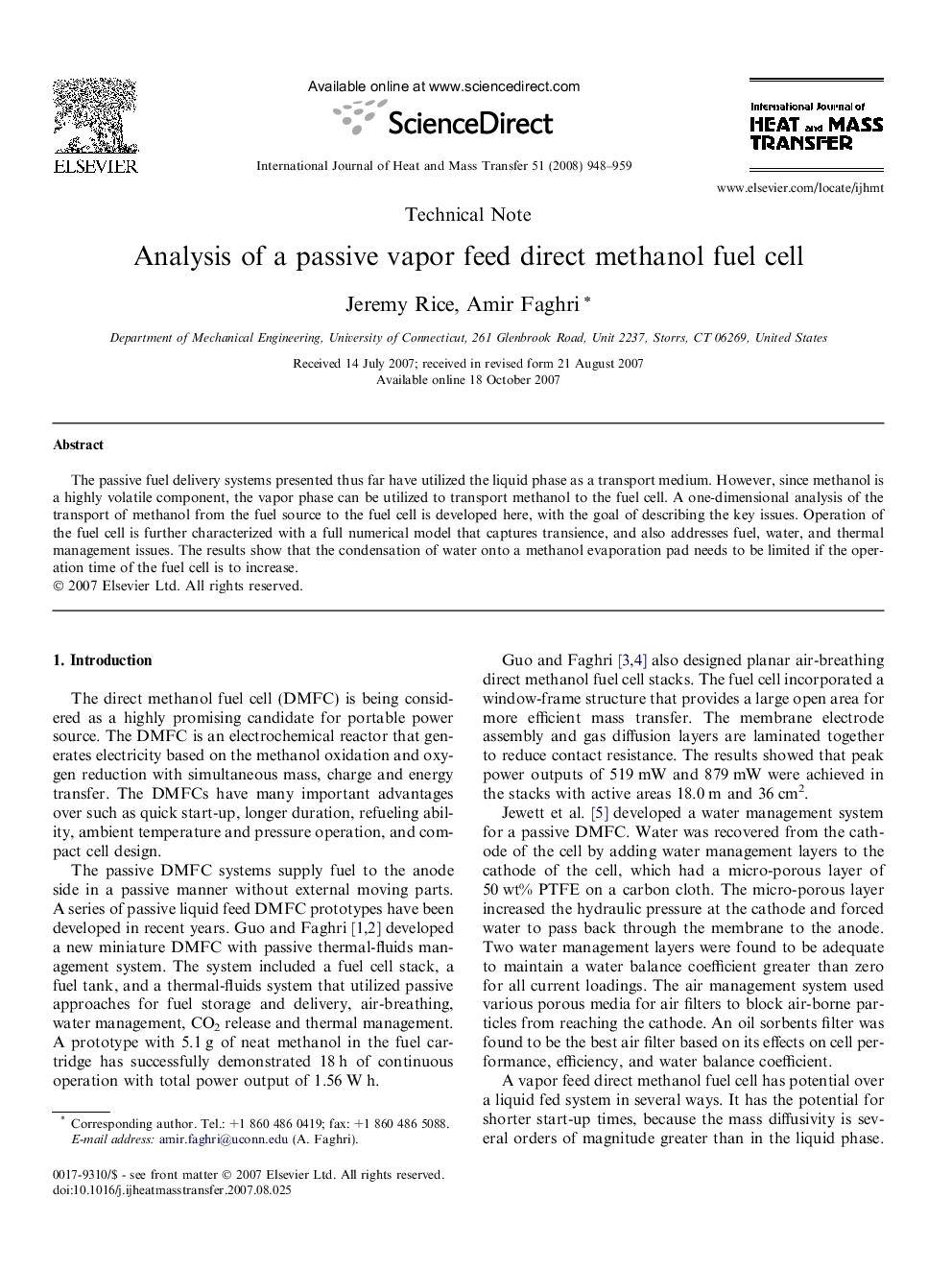| Article ID | Journal | Published Year | Pages | File Type |
|---|---|---|---|---|
| 662925 | International Journal of Heat and Mass Transfer | 2008 | 12 Pages |
Abstract
The passive fuel delivery systems presented thus far have utilized the liquid phase as a transport medium. However, since methanol is a highly volatile component, the vapor phase can be utilized to transport methanol to the fuel cell. A one-dimensional analysis of the transport of methanol from the fuel source to the fuel cell is developed here, with the goal of describing the key issues. Operation of the fuel cell is further characterized with a full numerical model that captures transience, and also addresses fuel, water, and thermal management issues. The results show that the condensation of water onto a methanol evaporation pad needs to be limited if the operation time of the fuel cell is to increase.
Related Topics
Physical Sciences and Engineering
Chemical Engineering
Fluid Flow and Transfer Processes
Authors
Jeremy Rice, Amir Faghri,
